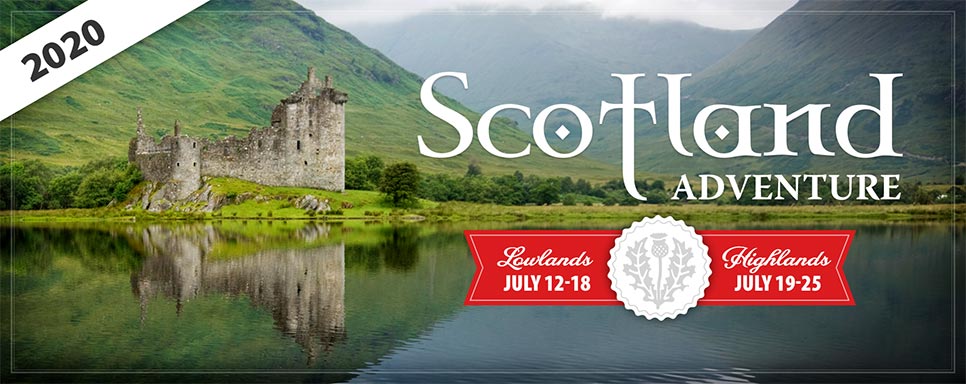
“But when the goodness and loving kindness of God our Savior appeared, he saved us, not because of works done by us in righteousness, but according to his own mercy, by the washing of regeneration and renewal of the Holy Spirit, whom he poured out on us richly through Jesus Christ our Savior, so that being justified by his grace we might become heirs according to the hope of eternal life.” —Titus 3:4-7
The Birth of Mitsuo Fuchida, December 3, 1902
“The sunrise in the east was magnificent above the white clouds as I led 360 planes towards Hawaii. I knew my objective: to surprise and cripple the American naval force in the Pacific . . . Like a hurricane out of nowhere, my torpedo planes, dive bombers, and fighters struck suddenly with indescribable fury. . It was the most thrilling exploit of my career.”
 nd so the Second World War drew in the United States with the attack on Pearl Harbor by the Empire of Japan, four days after Mituso Fuchida’s thirty-ninth birthday. On that occasion, he radioed back to the carrier the code that the attack was successful and the enemy caught unaware: “Tora Tora Tora!” nd so the Second World War drew in the United States with the attack on Pearl Harbor by the Empire of Japan, four days after Mituso Fuchida’s thirty-ninth birthday. On that occasion, he radioed back to the carrier the code that the attack was successful and the enemy caught unaware: “Tora Tora Tora!”
 Mitsuo Fuchida (1902-1976) Japanese captain in the Imperial Japanese Navy Air Service and lead airman for the attack on Pearl Harbor Mitsuo Fuchida (1902-1976) Japanese captain in the Imperial Japanese Navy Air Service and lead airman for the attack on Pearl Harbor

Siege of Port Arthur during the Russo-Japanese War (1904-1905)
|
Mitsuo Fuchida was three years old when the Russo-Japanese war came to an end. He grew up hearing the stories of how Japan had wiped out the Russian fleet and humbled a mighty European army and navy. The Land of the Rising Sun still received little respect or parity among the great nations of the world. In the 1920s and 30s Fuchida learned to fly fighter planes, and, by the time he received the orders to lead the attack on Pearl Harbor, had logged thousands of hours of preparation and developed the highest skill of any Japanese pilot in the Empire.
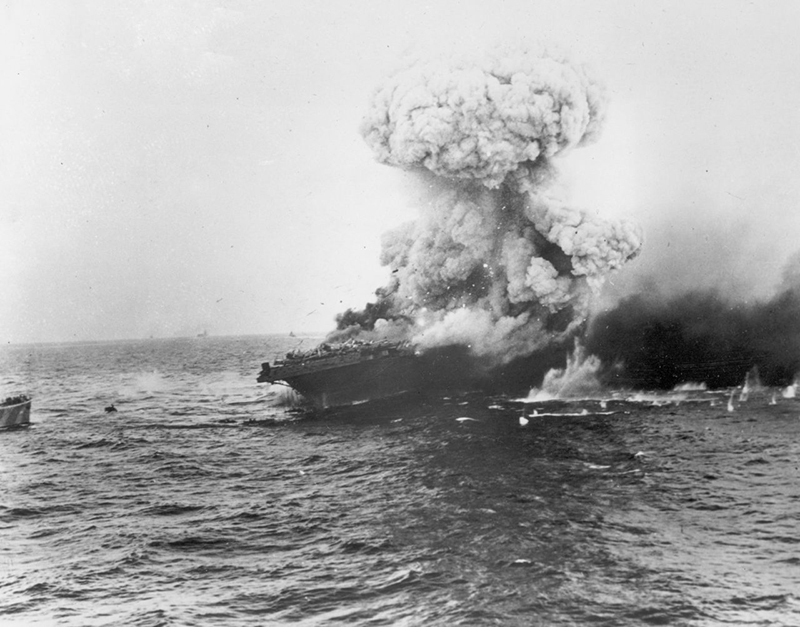
Explosion on board the USS Lexington during the Battle of the Coral Sea (May 4-8, 1942)
|
He participated in the rather inconclusive Battle of the Coral Sea and was picked to lead the air squadrons, in what Japan hoped would be the decisive blow against the Americans in the Pacific at Midway Island. He fell ill on the voyage to Midway and turned over command to another pilot. He was evacuated from his carrier during the Battle of Midway, the high water mark of the Japanese offensive in the Pacific War.
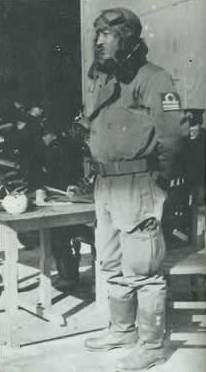
Fuchida in training for the attack on Pearl Harbor
|
Through the rest of the Second World War, Fuchida trained airmen, especially instructing the teenaged suicide pilots of the Kamikaze squadrons, who crashed their planes into American ships, strapped into their seat with a non-releasable bomb underneath. His request to join them in a suicide attack was rejected by the high command. With the end of the war, Fuchida, Japan’s most famous combat pilot, bought a rice farm in which to make a living, though he knew nothing but flying planes.
With the capture and demotion of the Emperor of Japan, the religious devotion to Hirohito as the Sun God, the heart of the Japanese worldview, received a mortal blow. Fuchida himself had begun to reconsider his beliefs when studying the heavens on his rice farm. The testimony of an army friend, captured by the Americans, but presented with the Gospel in the POW camps in the United States, instead of torture or beheading, also impressed the hero. Finally, he was given a Gospel tract written by an American airman captured and tortured by the Japanese—Jacob DeShazer—in which he forgave his enemies and returned to Japan as a missionary.
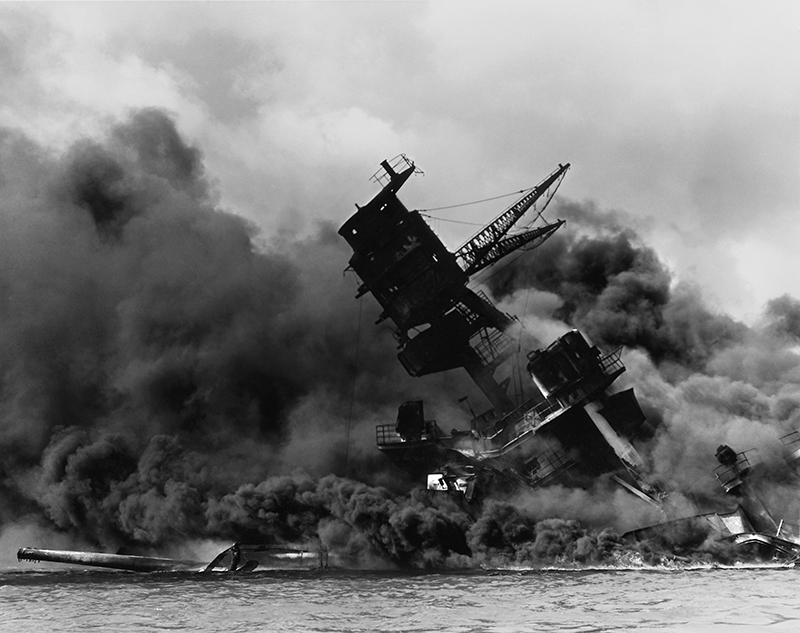 The USS Arizona burns after the Japanese attack on Pearl Harbor—December 7, 1941 The USS Arizona burns after the Japanese attack on Pearl Harbor—December 7, 1941

Jacob DeShazer (1912-2008) Doolittle Raider and Japanese POW
|
Fuchida, Japan’s greatest living WWII hero, came to faith in Christ and sought out DeShazer, with whom he then travelled across Japan, drawing large crowds, and evangelizing for his new Faith. Mitsuo Fuchida traveled to Europe and the United States in the 1950s and 60s, lecturing to the Air Force high command in Germany, Great Britain, and the United States, explaining the thrill and technique of leading the attack on Pearl Harbor, his providential survival of the war, and about how Jesus Christ changed his life: “I can see now that the Lord had laid His hand upon me so that I might serve Him.” His children married Americans and lived in the United States. An inscrutable Providence once more teaches us that no man or woman is too far from the reach of God’s saving Grace. Mitsuo Fuchida’s “flight to worlds unknown“ took place in Japan in 1976.
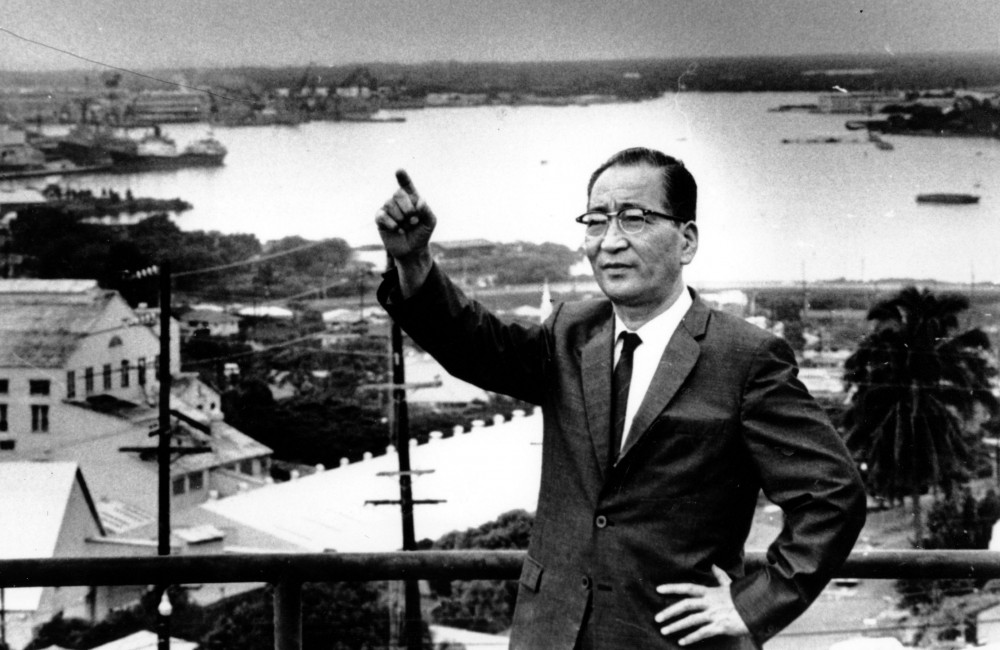 During a return visit in 1966, Fuchida points with his back to Pearl Harbor to where he led the Japanese planes through the mountains of Oahu Island and down on the the crowed Harbor During a return visit in 1966, Fuchida points with his back to Pearl Harbor to where he led the Japanese planes through the mountains of Oahu Island and down on the the crowed Harbor
The in-depth story of Fuchida’s life is told in the book entitled God’s Samurai: Lead Pilot at Pearl Harbor, by Donald Goldstein and Katherine V. Dillon, and in several books about Jacob DeShazer, the Doolittle Raider who endured four years of captivity and returned to Japan after the war to preach the Gospel.

Image Credits:
1 Mitsuo Fuchida (Wikipedia.org)
2 Bombardment of Port Arthur (Wikipedia.org)
3 USS Lexington (Wikipedia.org)
4 Fuchida preparing for Pearl Harbor attack (Wikipedia.org)
5 Attack at Pearl Harbor (Wikipedia.org)
6 Jacob DeShazer (Wikipedia.org)
7 Fuchida, 1966 (Wikipedia.org)
|






